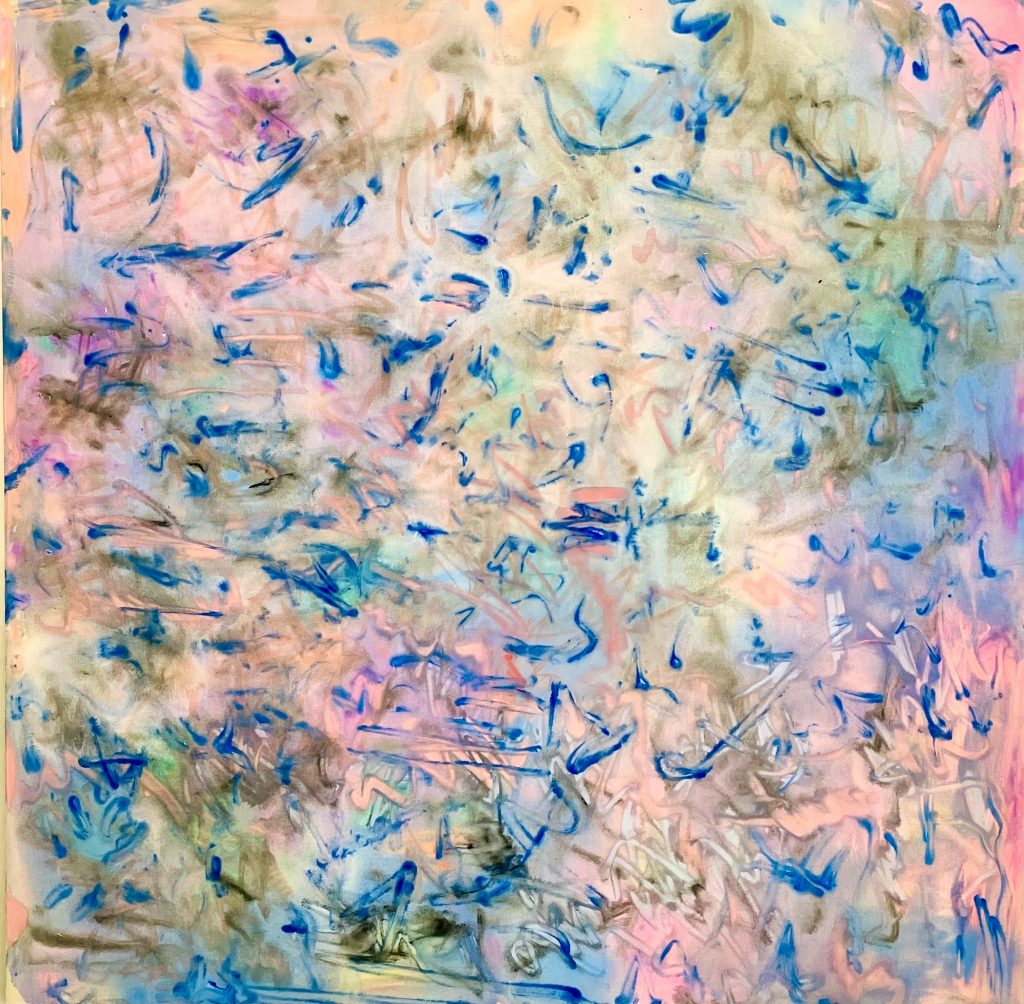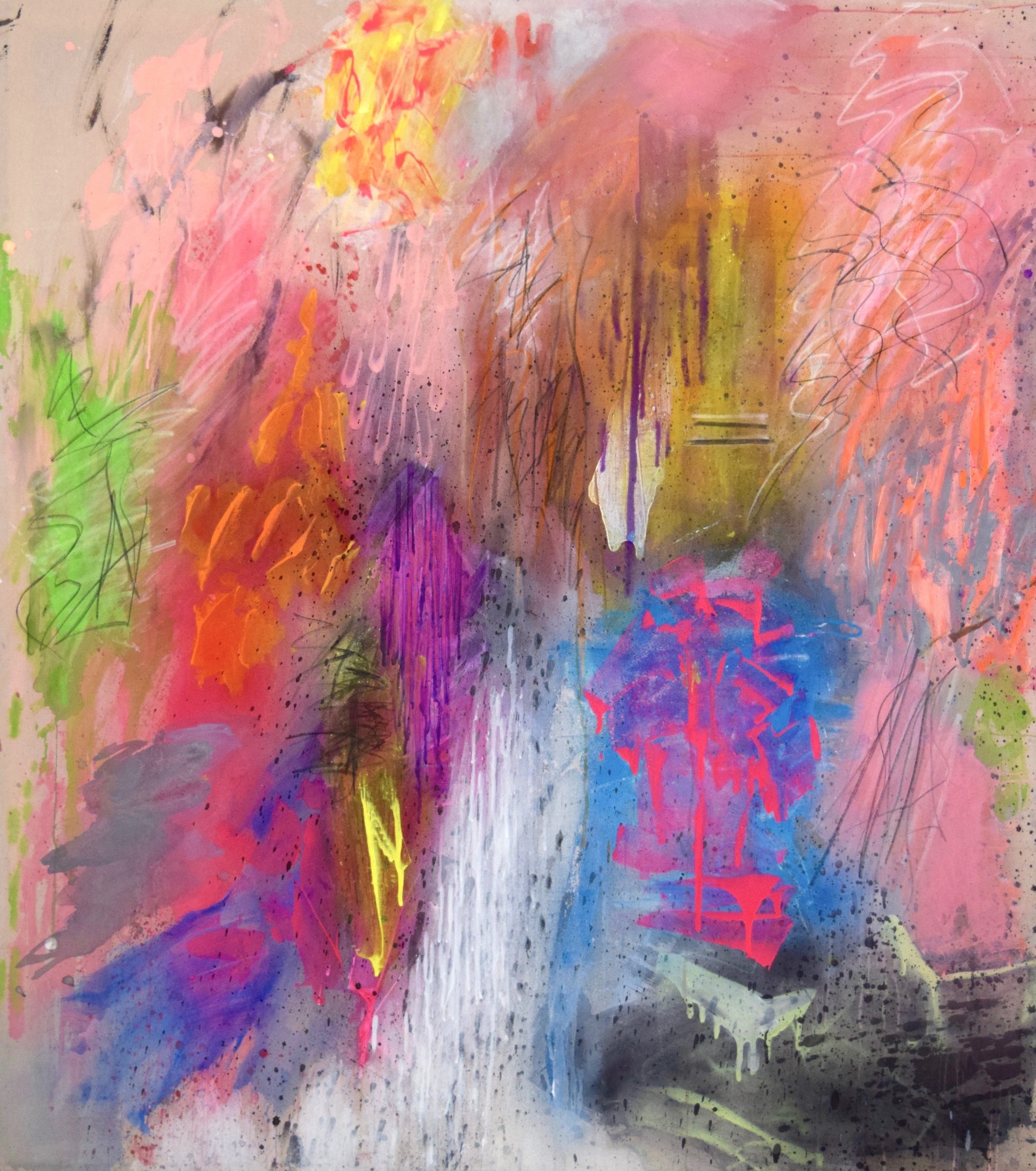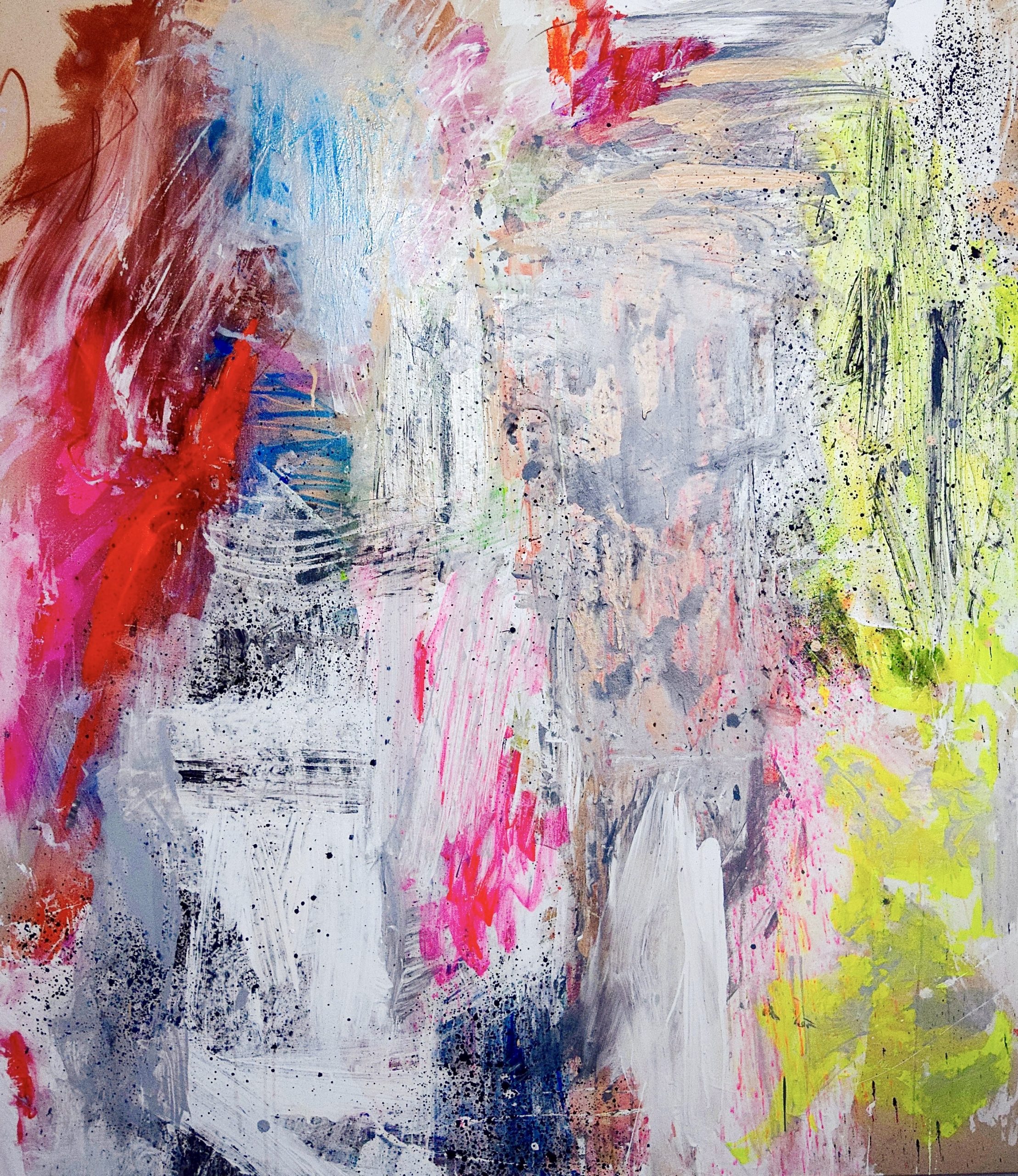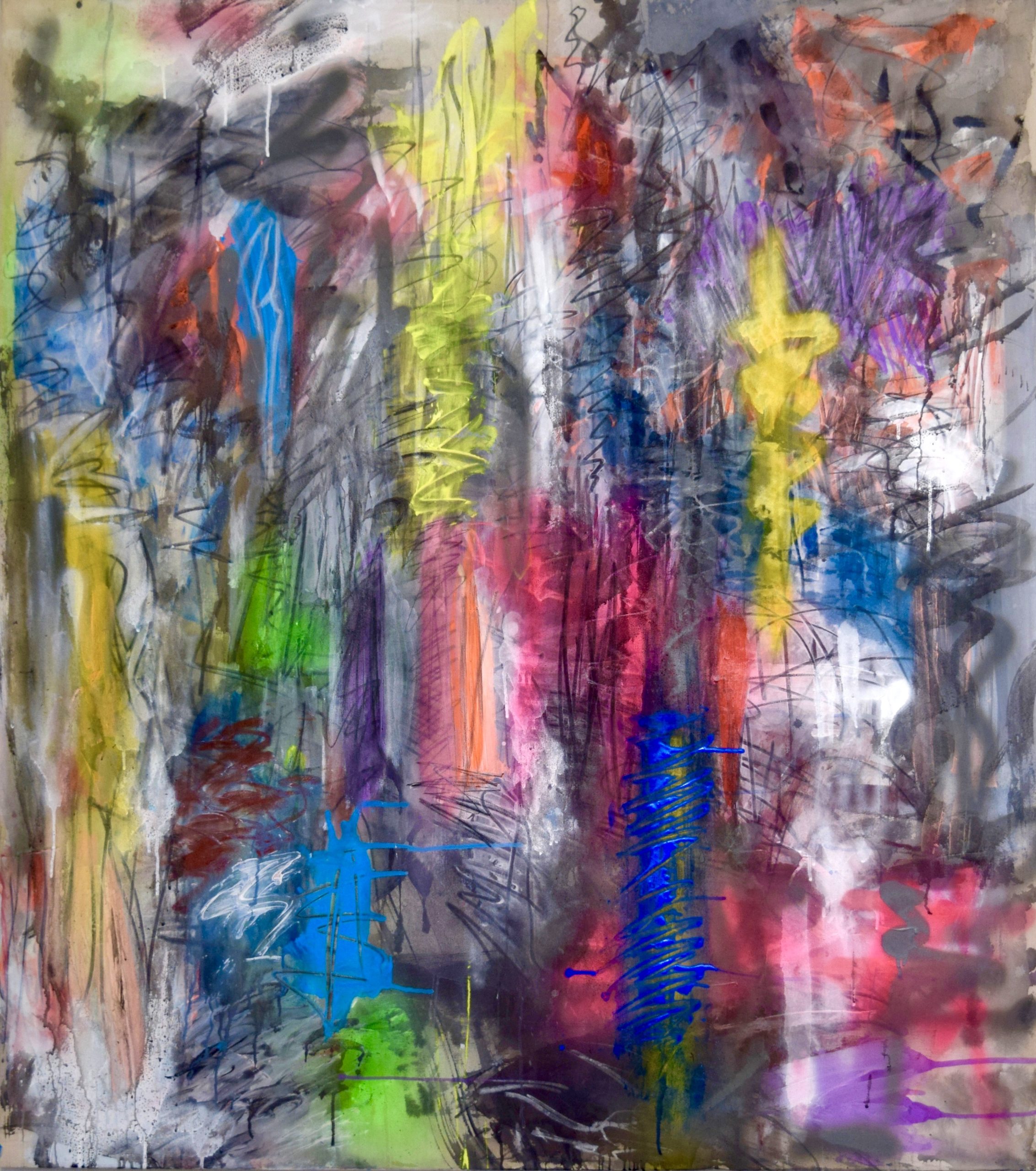
I’m not really a history of art person, I’ve always been in the here and now although I do have favourites that come from the past. I am aware that I do owe some debt of gratitude to Abstract Expressionists, Pop Artists and Arte Povera as they resonate somewhere with me. So I have some sense of the past, but more so the near past. As my practice has developed over the years, I guess abstraction has become my spiritual home. I’m aiming towards a very pure painterly painting, where nothing much is referenced from the external world. The work consists of the application of the paint, it’s not about much else. I guess in a way I am dismantling a hierarchy of taste and value, I’m not prioritising any one thing over another. I always had a feeling that somehow painting could be more democratic. Paradox would be a good way to describe my practice, it does two different things, in one direction I’m throwing away and undermining values but in the other direction, I’m doing that so the painting can be more so than some of its parts.


What constitutes ‘when to stop’ in a painter’s practice is more than a vague aesthetic question of practicality. To know when you’ve reached a painting’s end is a complex balance of feeling and understanding for the artist; being satisfied that one’s endeavours have been honest and focussed; not trying too hard, not trying too little. Knowing when a painting is complete requires that you set out in the first place with some kind of intention, however vague, for how do you reach a destination without knowing which way you’re facing?
Pure abstraction, in its most contemporary sense evades objective value judgement. In the 20th century painting has been examined, dissected, regurgitated, and subjected to varying degrees of irony, postmodern assimilation and even post post-modernist zeal a thousand times. So, it’s hard to know how to approach the action of abstract painting without treating it as an archaic form of ancient ritual, on a par perhaps with archery, wrestling, or basket weaving.
Evaluating abstract painting in the 21st century is inherently meta in every sense of the word. All painting is self-referential, inextricable from history. Meta describes a state of being behind, after, or beyond. It is the condition of being both secondary and somehow higher, simultaneously. One way to evaluate a painting then, especially a so-called abstract one, is to identify any signs within the work that these unavoidable conditions have been seen, understood, and responded to by the artist in question. Without such a hint of cognisance the painting remains attached to an outmoded formalist argument that ultimately points to the preferences of artist and viewer, and not much else.
Abstract painting in our era therefore requires a mental backflip by the artist in which they must first completely undermine any claim to artistic sovereignty. Once recognition of the works inevitable failure has been achieved now, and only now, has it earned the right to further contemplation. Within this pre-emptive framework it is possible to review Robert Bradford’s recent oeuvre in a suitably contemporary light.


Bradford’s new paintings are rendered on thin calico, imprecise wooden stretchers, and often with shop-bought household paints, including trade emulsions, poster paints, and neon craft acrylic of a highly synthetic variety. These non-artisan laisse faire materials, coupled with a long-held rebellious impulse to reject any bourgeois claims to privileged value immediately demand the most modern interpretation possible. Truly contemporary painting denies its own virtuosity in order to establish the conditions where meaning might exist.
Having set the artist’s positioning within a 21st century discourse, we clear the way for an enlightening experience of contemporary viewing. What we see in Bradford’s surfaces is a feat of duality; a reconciliation of opposing forces at once flashy and subdued, rebellious and conforming. This is not to be underestimated. How often do we see bombastic displays of overpainting, thick and sickly splash and daub masquerading as creative energy? Speaking eloquently without shouting, giving without insisting, emoting without exaggerating, not exhausting the audience with saturation is where serious, and joyful, painting begins.
Bradford’s recent Trash Art and Nebulous series are canvasses that, as the titles suggest, offer little at first but the generic materials from which they are made. Cheap poster pinks and flashes of neon green fresh from the tube are rendered with quick, throw-away gestures. Areas of scumbled white and indistinct tones hold the no-man’s land between oases of pure hues; the pause between notes played on a penny whistle. Ephemeral splashes of transparency cling lightly to the supports edge, drained of romanticism. As such Bradford concedes that the experience of giving is best tempered with a dose of truth. Amongst this healthy scepticism we are left to freely absorb a purposeful painty riot, a non-didactic fiesta of the matter-of-fact. Marks, colour and strokes express doubt in paintings’ privilege position whilst delivering a shot of the good stuff, relieved of its heavyweight duties. The contemporary paradox that defines abstract painting in the 2020’s is neatly arrived at in a body of work that accepts it’s limits whilst freeing itself from them.

The Trash Art title points to a misleading temporality in the works, a suggestion that the painting is an end, in a final phase before landfill. Yet, as in Bradford’s sculptural work with pre-loved toys, trinkets and tosh, there is a strong element of re-use and recycling. Some works in the series are literally collaged, and over-painted with snippets of previous pictures. This is not just a literal function; the cyclecar process is a metaphor for the endless revolution of paintings death and rebirth. It’s a case of material and treatment carrying the burden of meaning without the need to preach or to make exterior reference beyond its own sphere of activity. Therefore, far from being slapstick, or even slapdash, a quickness of hand does not equate to the temporary. Rather, Bradford’s work revels in the idea of instability and impermanence to keep it moving, to keep it fresh, fully cognisant that it has already lived a hundred lives, and will live a hundred more.
Shane Bradford, 2022.
.
2022
